Today marks the highly anticipated debut of Beyoncé’s country album, titled Act II: Country Carter. This is the second in a planned trilogy of albums designed to reinvent her public image, conceived in the middle of the COVID-19 lockdowns. Her first foray into the genre did not go well; in 2016, “Daddy Lessons” off of Lemonade was given a chilly reception by both her traditional audiences and those aligned with country music. She received hateful, racist invective from the most vocal fans, and her purported move towards a more Americana-influenced sound was halted before it truly began.
But how did we get here? Where did Beyoncé’s career begin?
Born in 1981 in Houston, Texas to Mathew and Celestine “Tina” Knowles, Beyoncé Giselle Knowles was descended from African-Americans brought over from the North American slave trade on her father’s side and a mix of Acadian, African, and Creole heritage on her mother’s. Tina Knowles provided her daughter’s uncommon name through her own maiden name; a clerical error on Tina’s birth certificate rendered her family name “Beyince” as “Beyonce”, and she adopted it permanently.
The couple had musical interests, with Tina singing in a girl group in high school and Mathew singing as a solo act. Mathew came from a business background; originally from Gadsden, Alabama, he went to school in Nashville for business and emerged with a series of ever more prestigious sales jobs. He eventually signed with the Xerox corporation to sell copiers to large conglomerates, earning recognition as Salesman of the Year and necessitating a move to Houston. Tina opened the Headliners salon and became a fixture in the local beauty industry.
Once established in Houston, the devout Methodists raised Beyoncé (and her five-years-younger sister Solange) in the church, and Beyoncé sang in the choir. At first, her talents as a vocalist went unnoticed as she was a noticeably shy and reticent child who eschewed attention. When she went to dance class with instructor Darlette Johnson at the age of seven, Johnson noticed that she possessed an uncannily strong voice for such a young age. After working with her over a period of months, Johnson obtained Mathew and Tina’s permission to enter her into a school talent show. The rest is history.
Actually, that’s not the case. Despite early successes on the talent show circuit, it wasn’t until auditioning for a girl group (in the manner of the then-popular New Edition) that she made headway. There, she met LaTavia Roberson, and the duo along with several other transitory members combined to form Girls Tyme. (I assume it was a head-nod to Jimmy Jam and Terry Lewis’s Flyte Tyme, but I see no factual basis for that assumption. It doesn’t hurt anything so it gets filed away in the headcanon.) Other members included Tamar Davis (later a Prince protégé), and sisters Nikki and Nina Taylor. Later, the group was augmented by the addition of family friend Kelly Rowland.
Rowland’s home life was unstable, as her father suffered from alcoholism and PTSD after service in Vietnam. When her mother left her father, Kelly and her brother Orlando went with her to Houston from Georgia. Soon afterward, Kelly moved in with the Knowles family alongside Tina’s niece Angie Beyince who would later become a songwriter for the Knowles clan. Rowland was the sixth member of Girls Tyme, and the sextet soon attracted the attention of record producers and talent agents. Arne Frager was the most aggressive pursuer, and he invited the group to his studio The Plant in Sausalito, California. His idea was to frame the group as a vehicle for Knowles, who he saw as the most talented and the highest marketability.
His primary strategy for marketing was to debut the group on Star Search, then the most visible talent show in the country and one of the few ways to get nationwide audiences familiar with the group. He arranged an appearance through his wide network of music industry connections, having produced albums for Greg Kihn and Starship, and engineered albums for Prince, Howard Jones, Paula Abdul, and even Hank Williams, Jr. Take a look at the footage below:
In rehearsals for the performance Girls Tyme sang a gospel song in their signature harmonies, but at the last minute were persuaded to change it to the up-tempo rapping number seen above. The group lost out to Skeleton Crew, a band from Detroit consisting of five grown men. Later, Knowles would say that it was a defining moment in her childhood, teaching her the Jean-Luc Picard lesson that you can do something to the best of your ability and still lose.
The loss was devastating to the group, and soon it would implode. Mathew Knowles took the reins of management, applying his business acumen to Girls Tyme and creating his own Music World label. He even took classes in media management at a local Houston college to try to improve his skills. His first move was to streamline the group, cutting Davis and the Taylor sisters. He then added Beyoncé’s schoolmate LeToya1 Luckett to the lineup as a backing singer. This configuration would be the formula moving forward for the group:
Beyoncé in the lead vocalist role, taking most of the melody lines as a straight-forward but incredibly powerful mezzo-soprano with four octaves of range.
Kelly Rowland as the second lead, as a more gospel-inflected lyric mezzo-soprano with three octaves of range.
LaTavia Roberson as the alto backing singer, functioning like the bass in their harmonies. She also performed rapping interludes and was the frontwoman for interviews with media.
LeToya Luckett as the utility soprano, adding high notes in the harmonies like a tenor.
Mathew applied Maurice Starr tactics to his group, conducting seemingly endless rehearsals in singing, dancing, and even interviewing to craft the young girls into marketable stars. Summers off of school turned into “boot camps” of morning-to-night training.
Mathew’s taskmaster behavior led to a modicum of success; he was able to convince established groups like Immature and Dru Hill to take them on as an opening act., leading to several national tours. D’Wayne Wiggins of Tony! Toni! Toné! fame signed the group briefly to his own vanity label, although nothing came of his tutelage. Around this time, Girls Tyme cycled through various names such as The Dolls, Cliché, and Somethin’ Fresh.
The group settled on the name Destiny around the time Elektra Records came calling. Just prior to the label showing interest, Mathew took a bold step by asking the four girls to sign lengthy and elaborate contracts guaranteeing his role as their business and talent managers as part of his umbrella corporation, Music World Artist Management. According to Luckett, her mother asked to consult a lawyer prior to signing the agreement but was told that doing so would result in her removal from the group. All four signed the contracts. (#foreshadowing)
When Mathew committed to formally managing the group, he took another bold step by leaving his well-paying job at Xerox, leaving Tina to provide for the family. This put immense strain on their relationship, and played a pivotal role in the eventual dissolution of their marriage. He became fully enmeshed in the day-to-day running of Music World, which served as a vehicle for his entertainment ventures moving forward.
Elektra Records signed the group (in conjunction with Music World) with a tweak to their name; “Destiny” wasn’t available for trademarking purposes, so Tina Knowles says that she was inspired by the Book of Isaiah to change the moniker to “Destiny’s Child”.
The rest is history.
Wait, no it’s not. Elektra Records dumped the group after less than six months with nothing to show for it. Scrambling, Mathew reached out to Teresa LaBarbera Whites, a newly minted A&R executive for Columbia Records who was the Southwest region coordinator for the company, stationed in Texas. Her previous role was to scout talent for Sony (owner of Columbia, Epic, and other labels), and she had Girls Tyme on her radar for several years. Mathew asked Whites if there were any openings, and Whites pounced. Her first official signing for Columbia was Destiny’s Child. (Her second was Jessica Simpson. You win some, you lose some.)
Whites used some of the tracks Wiggins had produced independently as a teaser for the group, and arranged the use of their song “Killing Time” for the soundtrack to Columbia’s summer 1997 tentpole movie, Men in Black. Take a listen:
That same album also featured the wide-release debut of Alicia Keys, for what it’s worth. It’s an odd album, since only the title song and two pieces of Danny Elfman’s score are actually in the movie. The rest was a mixtape of songs “inspired by” the feeling of the film, featuring a whole host of urban-focused artists like The Roots, A Tribe Called Quest, De La Soul, Snoop Dogg, and Nas.
The success of the film and its soundtrack (which went triple platinum in the US) meant that lots of eyeballs and ears were tuned to Destiny’s Child. A single came out in November of 1997, the raucous “No, No, No”. It served as an effective teaser for their self-titled debut album, which emerged in February of 1998. The single was released in two different versions, one the original and one remixed by then-dominant producer/performer/auteur and now failed Haitian presidential candidate and alleged embezzler Wyclef Jean. Mathew recruited several producers rooted in the hip-hop world to assist with the album, like Jean, Jermaine Dupri, and Master P.
It’s here where the true ascension of Beyoncé begins. She was positioned front and center of the group, both the lead singer and the visual focus of the foursome. Reviews for the album as a whole were mixed; although their talent was undeniable, the prevailing critical thought was that their sound was indistinguishable from competitors like Xscape, SWV, Allure, or 702. The album sold well, but the group was unsatisfied with their direction, as it leaned more towards D’Wayne Wiggins’s neo-soul than a more commercial angle. Something had to change with their next album in terms of genre specificity, and quickly. A brief interlude with producer Timbaland to create a one-off single “Get On the Bus” for the Why Do Fools Fall in Love soundtrack led to a new direction.
When Destiny’s Child returned to the studio to record their full-length follow-up, they parted ways with nearly their entire production staff from their debut. The group instead asked Kevin “She’kspere” Briggs to spearhead the musical vision, on the suggestion of Whites. Briggs brought along his then-girlfriend Kandi Burruss (yes, now best known as one of the Real Housewives of Atlanta) from the aforementioned Xscape. Prior to his arrival, Destiny’s Child had composed several albums worth of ideas for tracks, taking their influences and refining them into what they perceived as their next steps.
Beyoncé personally took the reins on vocals, producing each vocal track individually and putting her touch on the overall approach. She quickly demonstrated an aptitude for arrangement as well as sonic shepherding, coaxing the best performances out of herself and her compatriots. In addition, she co-wrote eleven out of sixteen tracks, with the other members co-writing at least eight songs each. Upon Briggs’ entrance into the studio, the group had fifteen concrete ideas of songs, leaving room for just one more. Briggs and Burruss quickly came up with “Bug a Boo”, which changed the entire tone of the album.
The duo were asked to compose four more tracks, elevating Briggs to co-executive producer alongside Mathew Knowles. They scrapped four prospective ideas, and revamped each song already in production. Alongside individual song producers such as Missy Elliott, Rodney Jerkins, and Daryl Simmons, they all collaborated to form a pseudo-concept album based on the rules for relationships. Each song featured a spoken word outro that outlined which “commandment” was on display. The songs were more modern, reflecting the increasing maturity of the group’s members and their place in the music world.
Released in July 1999, The Writing’s on the Wall was widely seen as a tour de force for the young group. Destiny’s Child became superstars. The first single “Bills, Bills, Bills” was released at the end of May as a teaser, and it served as their first Billboard Hot 100 number one. As well, it earned two Grammy nominations for Best R&B Song and Best R&B Song by a Duo or Group. “Bug a Boo” was a slight disappointment as the second single, but the third more than made up for it. Unfortunately, it also spelled the end of this era of the band.
Tensions had been rising between the Knowles/Rowland camp and the rest of the band since the end of the first album’s promotional cycle. Roberson and Luckett felt that the goal of management (i.e., Mathew Knowles’ Music World Artist Management) was to make a star out of Beyoncé first and Kelly Rowland second, with no regard given to the other two members. There were concerns that Mathew was taking an unfairly large share of earnings as a fee, depriving Luckett and Roberson more since they didn’t live in Knowles’ house. Luckett and Roberson both moved to dissolve their management agreement with Music World in December 1999 while preparing for the third single’s release.
When filming began for “Say My Name”, neither Luckett nor Roberson were allowed to participate. Music World stated that the duo were to be replaced immediately with two new members:
Farrah Franklin, a Fresno native who met the group as an extra on the set of the “Bills, Bills, Bills” music video. Franklin was in the fledgling girl group Jane Doe, which was in the process of dissolving at the time. Her serendipitous arrival allowed Mathew Knowles to tap her immediately for the alto role.
Michelle Williams, an Illinoisan who had a chance encounter with Kelly Rowland and Beyoncé Knowles in an Atlanta hotel lobby. When it became clear that replacements for Roberson and Luckett were needed, a choreographer that knew both camps made the connection again, necessitating Williams’ departure from her then-current gig as a backup singer for Monica.
“Say My Name” was a smash hit, perhaps buoyed by the publicity surrounding the shift in personnel. Soon Roberson and Luckett sued everyone else, claiming that the money wasn’t allocated fairly and that their dismissal from Destiny’s Child was a breach of contract. This would continue over the next several years, with fiery back-and-forth in the media. The attention garnered did some damage to their reputation, but it didn’t affect their sales.
In fact, the group was hotter than ever with the success of “Say My Name” (which spent three weeks on top of the Billboard charts) and final single “Jumpin Jumpin” (which peaked at number three). The songs included vocals from the previous members, but all promotional material contained Williams and Franklin. The group recorded another one-off soundtrack single, this time “Independent Women, Part One” from the Charlie’s Angel remake. This was the first time both Williams and Franklin contributed; for Williams it would begin a long line of successes with the group.
For Franklin, though, it would be the only highlight of her brief career. After just six months with the group, she left under a cloud of suspicion. In an interview the day after her departure, Beyoncé herself said that Franklin missed too many promotional appearances and the group dismissed her as a result. Franklin’s version is that she was physically ill and unable to attend performances, and when she returned to the group she was verbally berated in an intimidating and dangerous fashion. She quit on the spot and returned home. Soon after, she intimated that her questions about the management fees and deductions from her paychecks were not well-received by Music World (i.e., Mathew Knowles). Franklin felt that she would never have any meaningful decision-making ability in the group, so she left.
After spending the remainder of 2000 on tour and doing more promotional work, the group proceeded with the recording of their next album Survivor as a trio. It’s a landmark album in modern R&B, setting the tone for danceable female-led music for the next two decades. Its main purpose, though, was to set the stage for Beyoncé’s inevitable solo turn. Near the end of the year, the ongoing legal dispute between Rowland and Knowles on one side and Luckett and Roberson on the other was tentatively settled, freeing the group’s energy to more positive directions. The duo dropped their allegations against Beyoncé and Kelly Rowland, but maintained their legal dispute with Mathew Knowles. They settled out of court for a re-allocation of royalties and a wide-ranging non-disparagement gag order covering all parties.
Upon the release of Survivor and specifically the title track, the dispute reignited. The line “you thought I wouldn't sell without you, sold 9 million” was seen by Roberson and Luckett as breaking the terms of the agreement. Ultimately, the two parties settled again in July 2002 with terms undisclosed. (Off the record, I imagine money changed hands and skeletons were swiftly rearranged back in their respective closets.)
That wasn’t the only controversy, as the Knowles family was accused of claiming responsibility for compositions that were more group efforts than singular works. Specifically, “Bootylicious” producer Rob Fusari was slighted at the implication that Beyoncé wrote the song singlehandedly, a statement she made in multiple interviews. This would become a pattern in later years, as shown in the listing of her best solo songs below this section.
Survivor was a smashing success despite all of the controversy (or perhaps because of it), but the group’s fortunes would change once more. Now, Mathew Knowles would take the reins of making three stars out of one superstar group by taking a hiatus and mimicking the path trod by KISS before them: solo albums all released at once. The focus of this article is Beyoncé, so I will concentrate on her releases. (Let’s be honest with one another: after the brief shining moment of Kelly Rowland’s collaboration with Nelly titled “Dilemma”, there’s not much to speak of. Michelle Williams’ gospel albums might as well have disappeared into the ether.)
Beyoncé’s debut was the last of the three to emerge, a strategic move by Music World to build hype and clear a path for her work in the marketplace. Her acting jobs in The Fighting Temptations and especially Austin Powers: Goldmember showed her to be a star outside of music as well, with her media profile definitively eclipsing the other two. It’s almost as if Destiny’s Child was simply a vehicle for her success from the start. (Maybe Luckett and Roberson were onto something.) Dangerously in Love was released in June 2003 and immediately hit the top of the charts.
Not only were the songs the best around, utilizing the skills of top producers and an essentially unlimited budget, but audiences were desperate to know more about Beyoncé’s personal life. She had collaborated with Shawn Carter (better known as Jay-Z) on his track “03 Bonnie and Clyde” for his album The Blueprint 2 in 2002, and her appearance as his love interest in the video fueled speculation as to the nature of their relationship. When Dangerously in Love came out with Jay’s fingerprints all over it, it seemingly confirmed the rumors. (The couple generally do not speak about their partnership in the media, which could serve as inspiration for other celebrity couples.)
The album sold eleven million copies, earned her a record five Grammys, and cemented her status as a bona fide superstar. Beyoncé is credited as co-writer and co-producer on the majority of tracks, and they all bear the hallmarks of her input. (I don’t want to speculate on the veracity of rumors that she buys tracks wholesale from producers in exchange for their share of publishing in an Elvis-like agreement, but they’re out there. So are Beyoncé’s lawyers. I want no smoke.)
Meanwhile, D’Wayne Wiggins filed suit against his own lawyers, who convinced him to sell to Music World the ownership of both his original compositions (see, I told you it’s a recurring theme…) and his rights as an album packager with regards to the first three Destiny’s Child albums. He was initially guaranteed seven years worth of earnings from the group’s sales from Sony/Columbia. Wiggins asked for $15,000,000 in damages. Eventually, he settled out of court, probably for significantly less than he was asking.
Beyoncé went out on tour as a solo act, performed the National Anthem at the Super Bowl, sang with Prince at the Grammys, and toured the world in conjunction with Missy Elliott and Alicia Keys before settling down to record her next album. Initially, her plan was to use the leftover tracks from her debut to supplement new recordings, but instead she and her father decided to come back together with Rowland and Williams to do another Destiny’s Child album. In essence, the Knowles family was making good on their agreement to try to make stars out of the other members as well, using the sheer star-power of Beyoncé as a torch to light their candles. They attempted a miniature coup of sorts, by announcing that Solange would join the group as a fourth member, though the negative reception to this announcement changed plans and instead she released her own solo album to middling success.
Destiny Fulfilled was released in 2004, bookending the Destiny’s Child story (except for a Coachella reunion in 2018). The hits “Soldier” and “Lose My Breath” served as the final statements of the group before Beyoncé (sorry Michelle and Kelly) left her former bandmates in the dust. They toured sponsored by McDonald’s, and covered nearly every part of the globe in the process. Their show in Spain on June 11, 2005 saw Rowland announce during the concert that they would disband at the end of the tour for good.
The runway was now clear for Beyoncé to ascend to whatever step of fame is above superstardom. B’Day, her second album, was released in September 2006 to widespread acclaim and similarly strong sales. Although it was delayed by almost two years to allow her to record Destiny’s Fulfilled and film the execrable Pink Panther adaptation that doesn’t deserve further mention, the album sounded fresh and new thanks to its relatively innovative use of live instruments as opposed to electronic ones or samples.
She also used four studios simultaneously, with up to four separate sets of producers working on her tracks. This was done to maximize her efficiency in imitation of Jay-Z’s normal way of operation, since budgets were no longer an issue given her rampant success and profitability. She used top names like the Neptunes, the Underdogs, Stargate, Swizz Beatz, and Nellee Hooper as her engineers and producers, while also having a hand in production herself. The whole process took just three weeks out of a projected six.
Of note is the inclusion of Des’ree’s song “Kissing You”. A cover of the song from the Romeo + Juliet soundtrack from Baz Luhrmann’s film, it was selected by Beyoncé early in the process and slated for inclusion on the deluxe edition of B’Day. Des’ree acquiesced on two conditions: the name of the song would stay the same for copyright purposes and that the song wouldn’t be featured in a music video, both so as not to confuse the marketplace. Instead what had happened was Beyoncé changed the name to “Still in Love (Kissing You)”, while preparing to release it as a single complete with ornate video. Des’ree sued, settled out of court, and the song was removed from the deluxe editions and any reissues moving forward. (This keeps happening, doesn’t it?)
For her next album, Beyonce took inspiration from folk and rock music instead of her usual touchstones of R&B and dance. Well, for half of it, at least. Early in the process, she and her team decided to divide her next release into two parts: one featuring lighter and slower songs (I Am…) and the other incorporating faster and dancier numbers (Sasha Fierce). The combined album titled I Am… Sasha Fierce took significantly longer to produce, taking nine months to come to fruition.
Once more, producers were at her beck and call. This time around, names like Ryan Tedder and Babyface were selected to add new textures. Overall, more than seventy songs were recorded, and winnowing them into the final twelve tracks for two separate discs took significant amounts of time. Although that seems like a lot of chaff (and it is), her normal method of releasing multiple deluxe or tailored versions of her albums meant that several more tracks than usual would see the light of day.
Critics were not as universally kind to the album as they were with previous releases. Some saw the double-album gimmick as nothing more than a gimmick, a way to sell more copies without actually releasing more music. (Double albums count as two sales in most sales charts.) Others were concerned that by following trends rather than setting her own course, she fell victim to too many outside influences and diluted what made her an icon.
During the recording of the album, Beyoncé and Jay-Z were married, legally changing her name to Beyoncé Knowles-Carter. In the aftermath of its release, she made some sea changes to her life. First, she “killed off” the persona of “Sasha Fierce”, who she said was her on-stage identity. She decided to integrate it into her self and become more authentic to her own motivations. Second, she announced a hiatus from music on the advice of her mother, who implored her to “live life”. This break would allow her to concentrate on her new marriage and to recharge her artistic batteries in preparations for her next steps. Perhaps most importantly, she parted ways with her father and Music World as her management. Mathew Knowles had been guiding her career from its infancy, and she wanted to take the reins herself in determining her trajectory.
Her next album was solely her vision, and harkened back to her roots in soul, R&B, and early hip-hop. In fact, she had originally envisioned going back even further in her musical journey, taking inspiration from Fela Kuti and working with DJ Swivel and The-Dream to record an afrobeat album. They completed a full release but held it back, deciding on a more commercial path. (If someone wants to leak that, let me know…)
What finally emerged was titled 4 (as it was her fourth album, both her and Jay'-Z’s birthdays are on the fourth of the month, and most likely not a nod to Foreigner or Black Sabbath). Featuring just one other vocalist (the inimitable Andre 3000), 4 represents Beyoncé working without a wire. She is indisputably herself here, with outside influences taking a backseat to what she wants to do.
The songs themselves are a mixed bag, with some strong pieces marred by shaky lyrics and some experiments falling flat. The commercial success of the album was assured by sheer name power alone, but the sales took a slight downturn in comparison to the ridiculous numbers put up by her first three albums. Some could imply that pulling her attention for marketing and management tasks that were previously handled by her father could have resulted in vaguely underwhelming promotion. (She set up her own Parkwood Entertainment corporation to handle this and future releases.) Others would note that she suffered a great personal loss during the making of the album when she unexpectedly miscarried, which has a substantial impact on any potential parent including a worldwide musical phenomenon.
Happily, Beyoncé and Jay-Z conceived a child together in April 2011 in Paris, leading to a wonderful moment at the 2011 VMAs where she revealed her pregnancy to the world.
Beyoncé gave birth to Blue Ivy Carter on January 7, 2012, and returned to the stage just four months later in a three-night residency in Atlantic City. She stated that her goal was to show that a modern woman could “have it all”, including a career and a family. This performance was followed by a brief respite in the Hamptons where she concentrated on both her family and her next move. She recruited an all-star cast of producers and engineers, inviting them to the Hamptons at a forty-room mansion to live and record for months at a time. Seven separate recording studios were built in the house to accommodate all the activity.
The atmosphere was deliberately relaxed, with the focus being on living ones’ best life rather than a nose-to-the-grindstone pace of modern music production. She extensively documented the process in a self-directed (and frankly self-indulgent) documentary aired exclusively on HBO:
To the outside world, Beyoncé was taking a hiatus from music, emerging only to perform at Barack Obama’s inauguration, the Super Bowl half-time show, and promote her documentary. (So much for keeping a low profile.) Audiences expected the half-time show to presage new music, but instead she and her team let anticipation build. Behind the scenes, Beyoncé recorded nearly a hundred songs with various producers, including her newest collaborator Boots.
Originally signed to Roc-Nation (Jay-Z’s label and management group) as a songwriter and published, Boots would become Beyoncé’s go-to partner for her work over the next several years. He was excited by her ability to identify the best parts of wide-ranging pieces, extracting them and refining them into masterpieces. She was encouraged by his innovation and his clear new perspective, taking older ideas and making them new again. Together, they put together something special, and the marketing for this album needed to be special to match it.
Beyoncé embarked on a series of performances called The Mrs. Carter Show World Tour starting in April 2013 and stretching through the next twelve months. Over 132 shows and four continents, she sold over two million tickets and earned nearly $222,000,000 with a 97% sellout rate. Needless to say, audiences were desperate for something to release the tension.
Her self-titled fifth album was released on December 13, 2013, finalizing the date just a week before. There was no music video or hype ahead of time, simply dropping the album on that day with no preamble. The move was revolutionary and ground-breaking, proving that a work by an established artist could succeed without a massive machine clearing the way beforehand. Her concert tour changed overnight from a review of her career to that point to a celebration of her new album, with remixes and condensing of old favorites.
The album was a smashing success, in part because of the simultaneous release of a complete visual album encompassing all of the tracks. There is a distinct vision to the songs, and this is reflected in the cinematography and direction. It is, simply put, an artist at the peak of her power, owning her soul and charting her own course. Critics responded, calling it the best album of the year across all genres despite its December release. It was the best selling album by a female artist in 2013, and the sixth-best selling album period in 2014. (Billboard said it was the second best album of 2014, behind only the soundtrack to Frozen. I get it.) Her videos were recognized as well, earning her a Vanguard award from MTV at the 2014 VMAs.
That summer, she and Jay-Z announced their co-headlining On the Run tour, once more crossing North America to sold out audiences. In twenty-one performances in massive stadiums, the duo cleared $106,000,000 in ticket sales. The last two shows in September (after a brief layoff) were in France at Stade de France, where they played to almost 150,000 people. All was not well behind the scenes, though.
At some point in 2013 or 2014 Jay-Z cheated on Beyoncé, and she channeled her anger and pain stemming from his infidelity into art. Ironically, she and Jay-Z recorded in the same studios, both together and separately, as a way to work through their relationship difficulties. Her primary skill as an artist, besides her outstanding voice, is her ability to unify disparate parts into a whole concept; as a result, her concept albums stand head and shoulders above her other more singular works.
She spent almost a year in relative seclusion exploring her emotions and her relationships, not just with her husband but with her father. The infidelity she saw in her marriage mirrored that of her parents’ marriage, and the parallels became clearer her to the more she examined her situation.
You remind me of my father, a magician, able to exist in two places at once. In the tradition of men in my blood you come home at three a.m. and lie to me. What are you hiding?
spoken-word interlude from Lemonade
In February 2016, Beyoncé released a single titled “Formation”. The next day, she performed at the Super Bowl 50 Halftime Show alongside Bruno Mars and headliner Coldplay. (I’d embed it below but the NFL won’t let me.) Although Coldplay were theoretically the main attraction, there was no doubt as to who was the star that night. That spectacle also gave us this amazing pull-quote from a Bruno Mars feature story in Rolling Stone:
One day before the performance, Mars and Beyoncé were "watching playback backstage" while Beyoncé ate a bag of Cheetos. Mars asked her, "That's what you're doing?" to which she replied, "There's nothing more we can do these last two days. It's gonna be what it's gonna be. So I'm gonna enjoy this bag of Cheetos".
Two days after that, Beyoncé announced the Formation World Tour beginning in April 2016. Forty-nine shows across North America and Europe would result in 2.42 million tickets sold for a whopping $256,000,000 box office draw. It’s the most profitable tour of all time per show, and one of the top grossing tours of all time.
But before the shows started on April 27, Lemonade dropped on April 23. Initially a Tidal streaming exclusive thanks to her partnership with her husband, the album had all twelve tracks enter the Billboard Hot 100, a first for any female artist in history. It was accompanied by an hour-long film on HBO that examined the emotions Beyoncé felt during the production of the album.
Lemonade is inarguably the finest work in the entire Beyoncé discography. It is her magnum opus, her Citizen Kane, her Guernica, her David Copperfield. Somehow it remains intensely personal, deeply moving, and still accessible to a wide audience. Every note is laced with anguish and despair, but also a profound sense of hope and potential redemption. She embraces all of herself, from her feminism to her identity as a woman of African descent to her roles as a daughter, a mother, and a (scorned) wife. It is unapologetically Black, unflinchingly self-aware, and a definitive artistic statement.
At the start of 2017, Beyoncé was tapped to headline Coachella, becoming the first woman since Björk to perform in the main event of the arts and music festival. Then a twin set of circumstances necessitated a change. The bad news is that she would be unable to perform as scheduled, and instead would headline the 2018 festival. Lady Gaga took her place, although ticket prices on the secondary market dropped significantly.
The good news was that she was unable to perform due to being heavily pregnant with twins, an announcement she made on February 1 which set Instagram records for likes. Sir and Rumi made their debut on June 13, 2017, and their Instagram reveal a month later set another records for Instagram likes. The remainder of the year was spent doing feature vocals on other artists’ singles, such as Ed Sheeran, Eminem, and J Balvin.
In January 2018, Beyoncé and Jay-Z released “Family Feud” off of his album 4:44, once again revisiting his infidelity and her reaction. Their tour together was announced in March, and the next month saw her triumphant performance at Coachella featuring (to the shock of many) a Destiny’s Child reunion with Kelly Rowland and Michelle Williams. (No Farrah, LeToya, or LaTavia. Be real.)
She later released a fully edited version on Netflix titled Homecoming: A Film by Beyoncé, written, produced, directed, narrated by, and starring Beyoncé Carter-Knowles. The performance highlights a distinct Black culture that permeates her work, especially focusing on Greek life at historically Black colleges and universities. It is simply put one of the greatest concert films of all time, standing alongside The Last Waltz, Stop Making Sense, and Gimme Shelter.
The dominant performance at Coachella preceded the On the Run II tour, but she wasn’t done changing the music game. During the middle of their London concert, the giant video screens behind the duo went black followed by a simple message: ALBUM OUT NOW. It went live on Tidal (again an exclusive licensing deal) at the same time. Once more she had released a surprise album, this time as a collaboration with Jay-Z under the name “The Carters”. Everything is Love came out on June 28, 2018 with no preamble, although it was well known in the music press that Jay-Z was working on something at the same time as Lemonade.

Beyoncé’s performance dominates Jay-Z’s on the album, and many considered it to be a Beyoncé album featuring his occasional verses rather than a true collaboration. The idea was to take Lemonade and 4:44 and blend the two; her flavor overwhelmed his, and given the circumstances it couldn’t have happened any other way. The trilogy was completed, and with luck the story would be completed. (Unless Jay-Z cheats again. Men are dogs.) Critical response was underwhelming, but after the stunning accomplishment of Lemonade anything short of the Beatles’ Revolver or the Beach Boys’ Pet Sounds would be a step down.
Beyonce took a break from performing music in the next year to focus on her film career, though not without a musical component. She starred as Nala in the live-action animation hybrid remake of The Lion King alongside Donald Glover, Chiwetel Ejiofor, and James Earl Jones. While recording her lines, she was offered the chance to work on the soundtrack album, The Lion King: The Gift.
The album was accompanied by the official soundtrack, meaning that the two combined for a different experience. Beyoncé was able to use her afrobeat and gqom influences cultivated way back when for her aborted pre-4 release, working with African producers such as P2J, GuiltyBeatz, and DJ Lag for the sake of authenticity.
The next year marked a change, as COVID-19 swept the globe. This impacted the release of her next project, a brand new visual experience released solely through Disney Plus titled Black is King, featuring an all-star cast curated by Beyoncé. She used her now typical tactic of keeping production top secret until its trailer dropped on June 27, 2020. The film was released in full on July 31 of that year, and critics raved. In addition to her formidable skill as a musician and performer, it now was apparent that Beyoncé was a well-regarded filmmaker and even auteur.
She took most of the next year off, or at least so it appeared to outsiders. Behind the scenes, she and her team were hard at work on their next sweeping vision. Parkview Entertainment and the Knowles-Carter family came up with a new plan for a trilogy of albums, beginning in June 2022. Conceived in three acts, each designated by Roman numerals, the opening shot was Act I: Renaissance.
The album is a love letter to both Black and queer influence on music, focusing on electronic and dance music above all else. Her main influence from her own life was her “uncle” Jonny, a gay cousin of hers who helped raise her before his death from AIDS. At this point it should come as no surprise that she was able to commandeer the services of the best and brightest in music, this time working with No I.D., Boi-1da, and Skrillex alongside her usual cadre of engineers and studio personnel. She was also able to coax disco legends Nile Rodgers and Grace Jones into helping her achieve an authentic Seventies and Eighties club sound.
Some critics saw it as surpassing Lemonade and her self-titled album, but all reviewers saw it as a further indication that Beyoncé was and is one of the greatest musical artists of our generation. Her reputation as a taste-maker and trend-setter was cemented by yet another startlingly powerful release. Her four wins at the Grammys moved her into first place all time with thirty-two Grammy awards over her career.
In February of 2023, she announced the Renaissance World Tour, marking her return to full-scale touring in the wake of COVID-19. Fifty-six shows beginning in Stockholm, Sweden in May and ending in Kansas City in October sold out with a staggering $579,000,000 box office take. She showed that her reputation as bankable attraction was just as strong as her critical reception.
November saw her release a filmed version, titled simply Renaissance: A Film by Beyoncé through AMC Theatres. Her dominance continued with critics raving about her skill as a filmmaker. She seems unstoppable in the marketplace of ideas, and her next move was awaited by essentially all of media. When the Super Bowl in February 2024 aired, there was a commercial telling everyone what was to come.
…a country album? Sure, let’s go with it. Beyoncé has earned the goodwill of both audiences and critics, and her instincts with regards to trends have rarely taken a wrong turn in recent years. Cowboy Carter is set to be released today, March 29, 2024, and I for one can’t wait to see the results.
Now that I’ve gone through the entire history of Beyoncé Carter-Knowles, let’s drill down into what I believe to be her best ten songs. (I swear I didn’t mean to write this much, but here we are. I get voluminous when left unattended.) Remember these are my opinions and my opinions alone. I am sure some of you will disagree, and I invite you to let me know via social media or in the comments below. Shall we begin with number ten?
10. Love on Top
Harkening back to the R&B sounds of Beyoncé’s early childhood, “Love on Top” was the first single from the album 4, recorded after her turn as Etta James in the film Cadillac Records. Channeling Whitney Houston and Anita Baker in equal measures, the Eighties vibes are strong in this upbeat number. Take note of the four (!) key changes throughout the song; her co-writing alongside The-Dream and Shea Taylor is a display for her vocal prowess. She doesn’t get as much opportunity to showcase her high notes as much as her lower range alto growls, so this is a refreshing change of pace.
9. Baby Boy
From the infancy of her solo career comes this collaboration with one-time reggae wunderkind Sean Paul. The duo wrote the song with Robert Waller of Three Times Dope, Scott Storch of the Roots, and this “Shawn Carter” guy who keeps cropping up in the credits. Beyoncé took a turn towards dancehall, which was having a moment. Jamaican influence has waxed and waned in cycles throughout modern music. First-wave mento artists like Harry Belafonte and Lord Flea made a name in the Fifties, while the Sixties saw ska performers like Prince Buster and Jimmy Cliff pave the way for the Seventies explosion of Bob Marley, the Wailers, Peter Tosh, and Burning Spear among many many others. The Eighties spread it internationally with multiracial groups like the Clash, UB40, Madness, and even Culture Club showing its influence. Of course, the Nineties featured Ini Kamoze, Beenie Man, Buju Banton, Yellowman and the inimitable Snow as the vanguards of the island flavor. At the turn of the millennium, artists like Sean Paul and Lady Saw carried the flag leading to this appearance.
8. Drunk in Love
Essentially a delayed-by-a-decade sequel to “Crazy in Love” (don’t worry, it’s on here), the dynamic duo of the Carter family slows down a trap beat with the help of now-disgraced co-writer Detail. The three took the beat to the informal party atmosphere that accompanied the secretive recording sessions for Beyoncé’s fifth self-titled album. Her surprise release of the album with no prior promotion was a landmark achievement in guerilla marketing, leading to many other artists slavishly imitating he strategy. (Hey, Taylor! Loved you in Cats!). The single itself peaked at number two with eight weeks in the top ten.
7. If I Were a Boy
One of the very few songs on this list that Beyonce is not listed as a writer, “If I Were a Boy” was written by struggling solo artist BC Jean and internationally well-regarded but domestically unknown producer Toby Gad (no relation to Josh). Jean wrote the song in about fifteen minutes when composing track for a planned debut album, accompanied by Gad on guitar. When her deal fell apart, Gad began shopping the publishing rights to other artists. Unbeknownst to Jean, he made contact with Mathew Knowles, who bought it immediately. Gad then arranged for a co-production deal for himself, freezing out Jean entirely. She was understandably upset, and raised a ruckus in media. Jean was made whole after all, but was thoroughly disappointed that she was now best known as a songwriter (for such artists as Miley Cyrus, Adam Lambert, Kimberly Caldwell, and Ariana Grande) instead of her dream of becoming a solo star.
6. Halo
It’s said that good artists are inspired while great artists steal. Is it stealing when you re-use bits of your own work again? That’s the question for Ryan Tedder, who became known as the lead singer and songwriter for OneRepublic before emerging as a superstar producer and co-creator for other artists. His first OneRepublic hit “Apologize” was supplanted at the top of the chart by “Bleeding Love” from Leona Lewis, which he also helmed. His next big hit was Kelly Clarkson’s “Already Gone”, which sounds strikingly similar to both of his previous smashes. When it came time to work with Beyoncé, he came up with “Halo”… which sounds a lot like the other three. It was so blatant that Kelly Clarkson called him out in the press for it, intimating that the song was just a re-use of the exact backing track from “Already Gone”. Some critics claimed that both songs were re-workings of “Bleeding Love” that Leona Lewis turned down for being too similar. Clarkson even tried to remove “Already Gone” from her own album so as not to disrespect , but RCA Records refused as it was so late in the production. Regardless, “Halo” sold nine million copies so Tedder and Beyoncé probably walked away happy.
5. Irreplaceable
Presaging her turn towards country, Ne-Yo and the producers from Stargate originally wrote this song as a country ballad a la Faith Hill or Shania Twain. The drums changed things, as Ne-Yo thought it would be a better hybrid R&B country song like Ray Charles or modern-day Chris Stapleton. His A&R team decided it would work even better as a song sung by a female artist, so they shopped it around. The Knowles family snatched it up, and Beyoncé took a pass at rewriting some of the vocal melodies to suit her. When her second album B’Day was released, “Irreplaceable” became the third American single. However, Beyoncé was quick to claim credit in concert for the entire composition, stating that “I wrote this for all my ladies”. Ne-Yo was understandably upset, and made statements clarifying the roles in writing the song in the press. This was the last song he worked with Beyoncé on, so draw your own conclusions about how that was received.
4. Run the World (Girls)
As mentioned above with “Baby Boy”, Jamaican influences have run through American music in cycles, and this is another step in that direction for Beyoncé. The principle sample in “Run the World” is from “Pon de Floor”, a song by Major Lazer which is a collaboration between internationally known DJs Diplo and Switch. Switch and uber-popular songwriter The-Dream brought the idea of “Run the World” to the sessions for Beyoncé’s fourth album 4, where it was a bit of an outlier in the otherwise R&B influence songs. “Run the World” uses the martial drumbeat to propel the song forward, loading the dancefloor with energy. Despite the song’s effervescence, it only reached number twenty-nine on the Billboard charts. Can’t win them all.
3. Work It Out
The first single from Beyoncé is still one of her best. Arising from her participation in Austin Powers: Goldmember where she played Foxxy Cleopatra in a Bond-girl pastiche, the song was a strong debut that established her as a force to be reckoned with separate from Destiny’s Child. This is one of the finest examples of The Neptunes (Pharrell Williams and Chad Hugo) doing work-for-hire production on a hit single, following Ol’ Dirty Bastard’s “Got Your Money”, Mystikal’s “Shake Ya Ass”, Britney Spears “I’m a Slave 4 U", NSYNC’s “Girlfriend”, and their absolute best song, Clipse’s ”Grindin”. “Work It Out” is a love letter to James Brown filtered through a female lens. Despite its inherent catchiness, it didn’t crack the Billboard Hot 100. Go figure.
2. Single Ladies (Put a Ring On It)
The centerpiece of Beyoncé’s third album I Am… Sasha Fierce is a club stomper of the highest order, serving as the highlight of many a bachelorette party, wedding reception, and especially divorce celebration ever since. Although the song is a landmark in Beyoncé’s career, the video is even more of a revolutionary at. Essentially, it defined a generation’s female-focused music videos with its intense choreography, stark cinematography, and inventive visual effects. It was so well-received that it was inevitable it would sweep the MTV VMAs, where it earned nine nominations. Right? Not so fast: it gave us one of the defining incidents in two other artists’ careers when the award for Best Female Video was awarded to Taylor Swift’s “You Belong With Me”. As Swift tried to accept the award, Kanye West interrupted and caused a huge debacle that was the first exposure many people had to his unbalanced behavior in public.
1. Crazy in Love
Here you have it: the best single work in the entire discography of Beyoncé Knowles-Carter. From her first solo album Dangerously in Love comes the apex club-banger in her catalog. The beat came from Rich Harrison, using a Chi-Lites sample of “Are You My Woman (Tell Me So)” from 1970, filtered through a modern dance-R&B lens with more than a touch of hip-hop flair courtesy of Jay-Z. Harrison had the germ of the idea when Beyoncé first called him, and despite her misgivings about a soul horn sample in 2002, she gave him just two hours to flesh it out into a full song. The fact that Harrison was suffering through a mighty hangover while under the gun makes the accomplishment even more impressive. When she returned, she filled in the bridge and ad-libbed the hook “uh-oh, uh-oh, you know-know” that brought the whole composition together. At 3AM that night, Jay-Z wrote and recorded his verse in just ten minutes, putting a bow on the production. When it was released in July of 2003, it hit number one immediately, pulling Dangerously in Love to the same position on the album charts. If you weren’t around in 2003, first of all why are you reading this, and second it was absolutely everywhere, an inescapable summer anthem for the ages. It’s her best song, one of her signature songs, and easily the most outstanding work in her history as an artist.
Thank you for joining me on this excursion into an actual timely event. See, I can do relevant material! I’m hip, I’m with it, I’m a trendsetter! (Okay, not really.) I’ll see you next time with another more evergreen topic. You should probably be prepared.
Spanish for “the Toya”





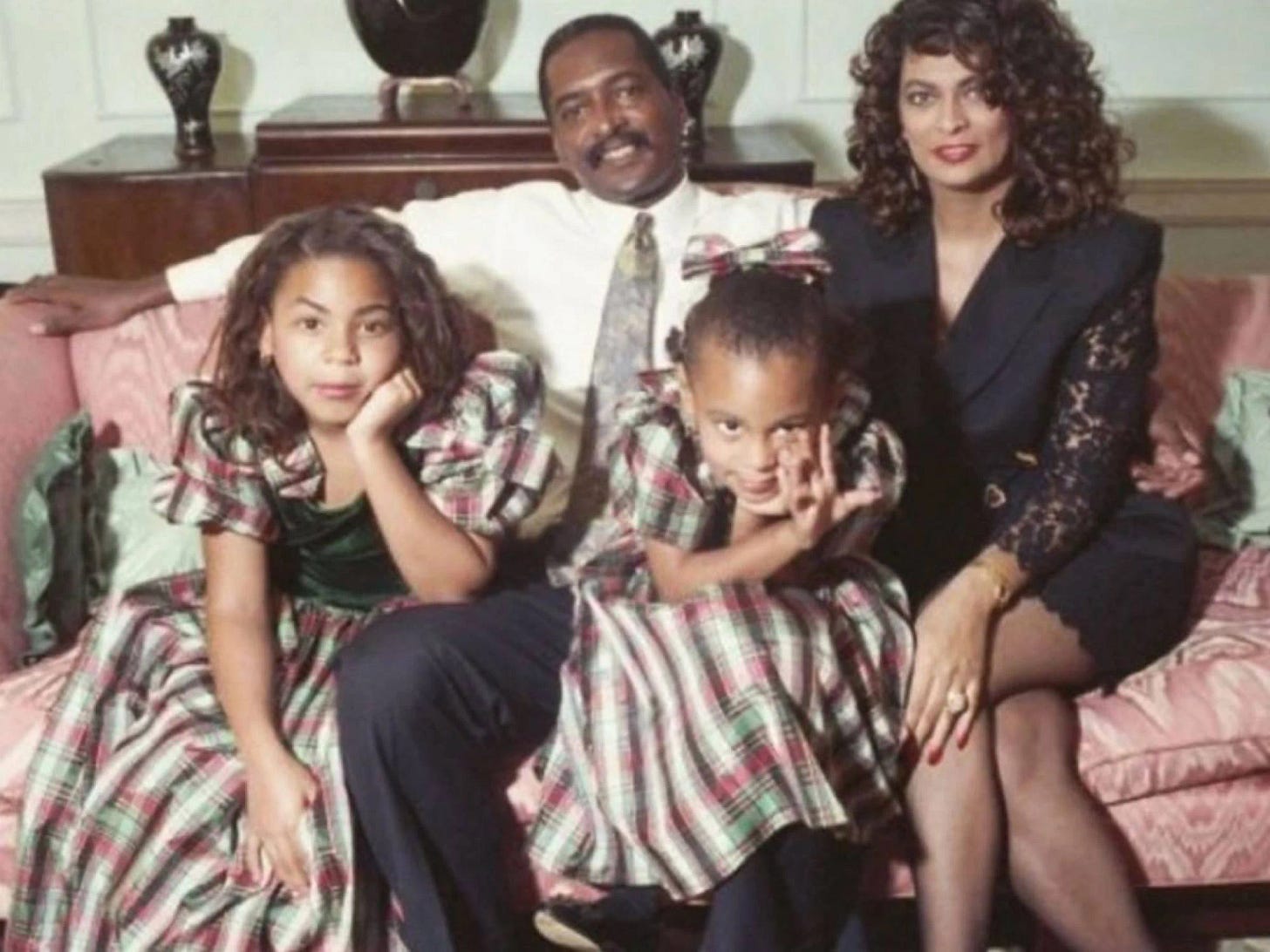
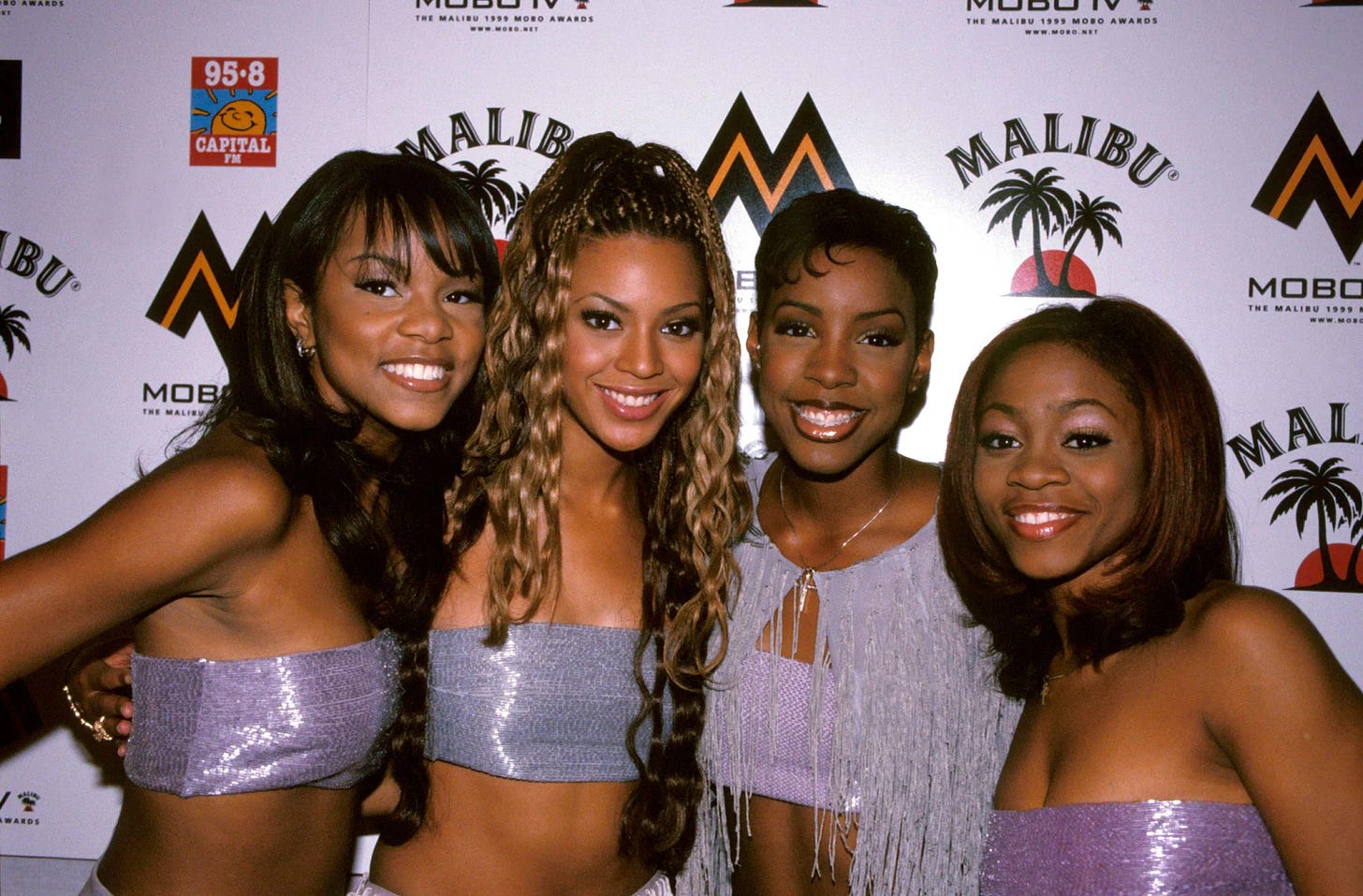
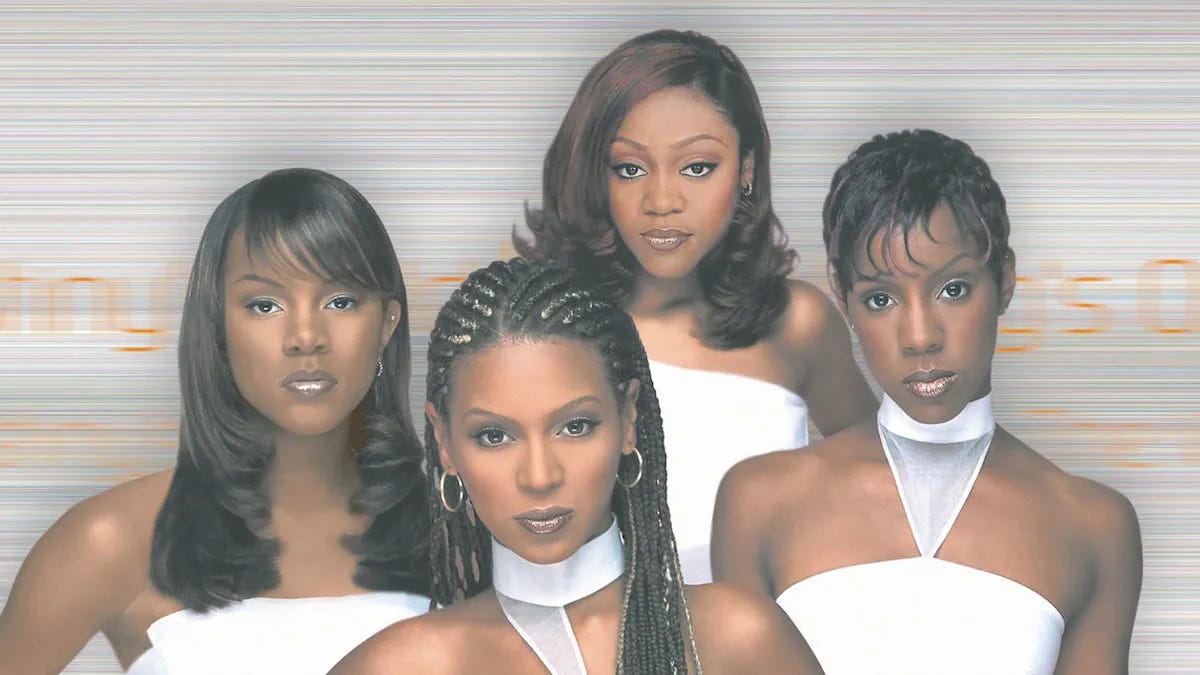

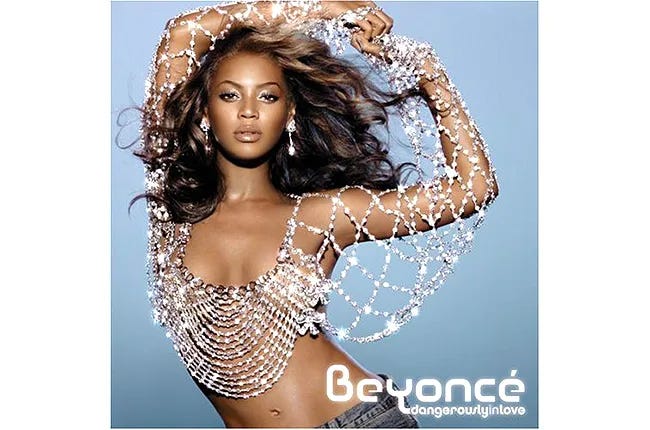
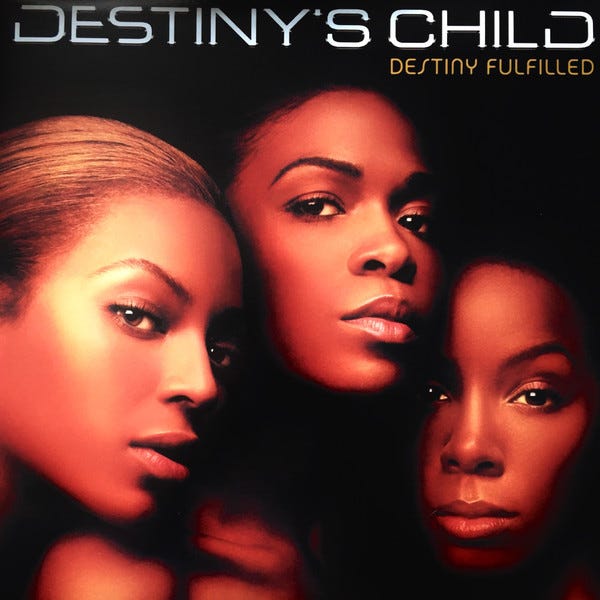
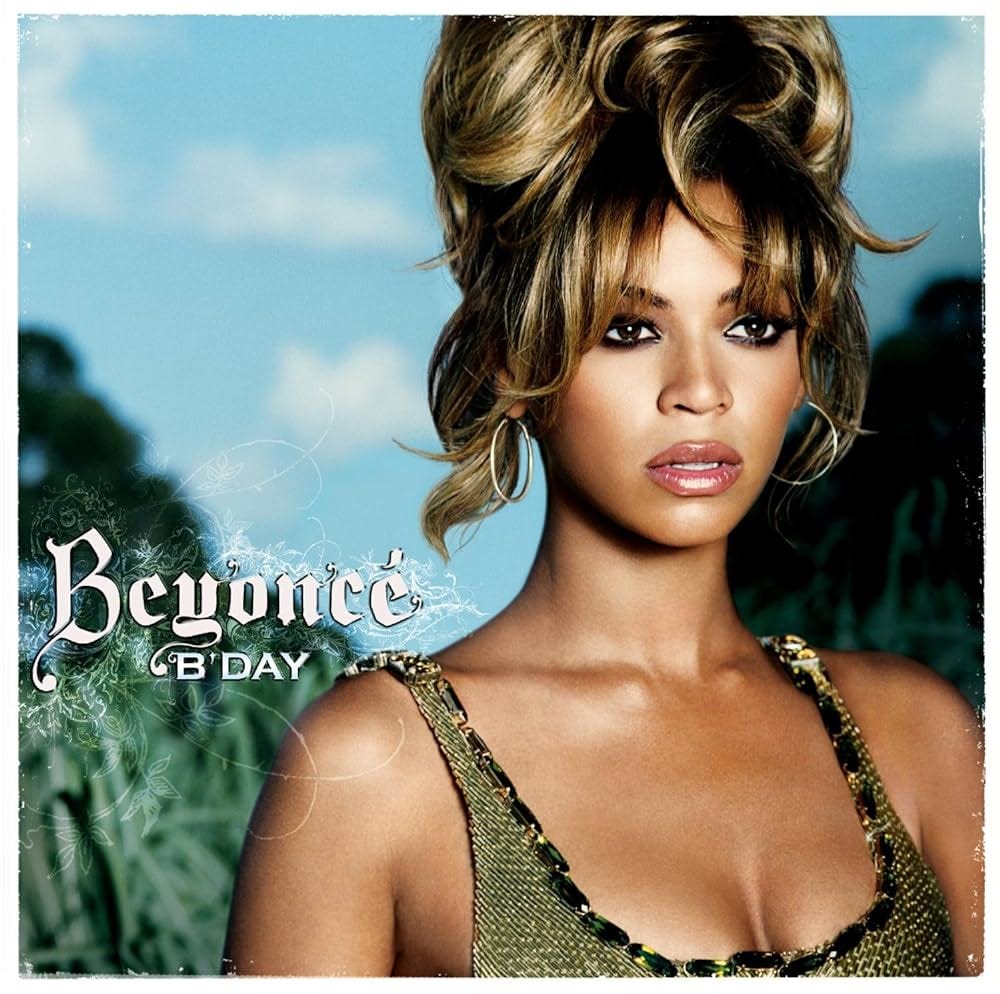



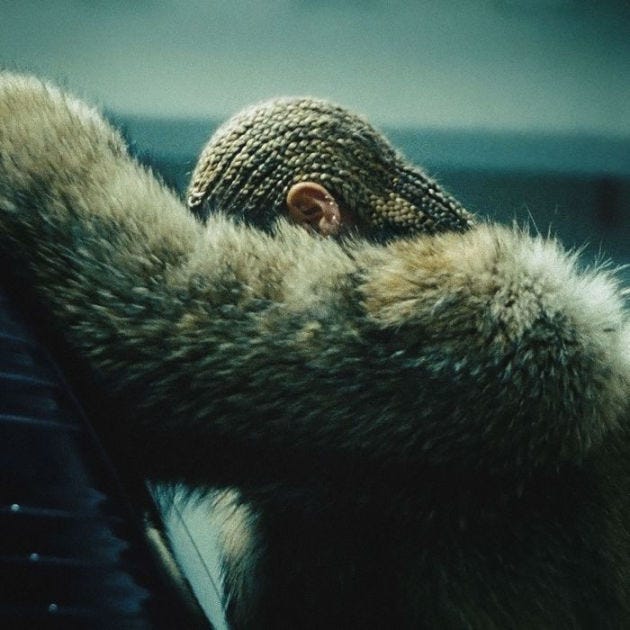
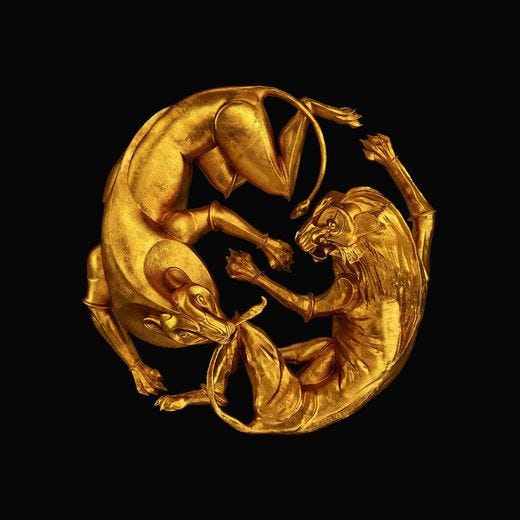
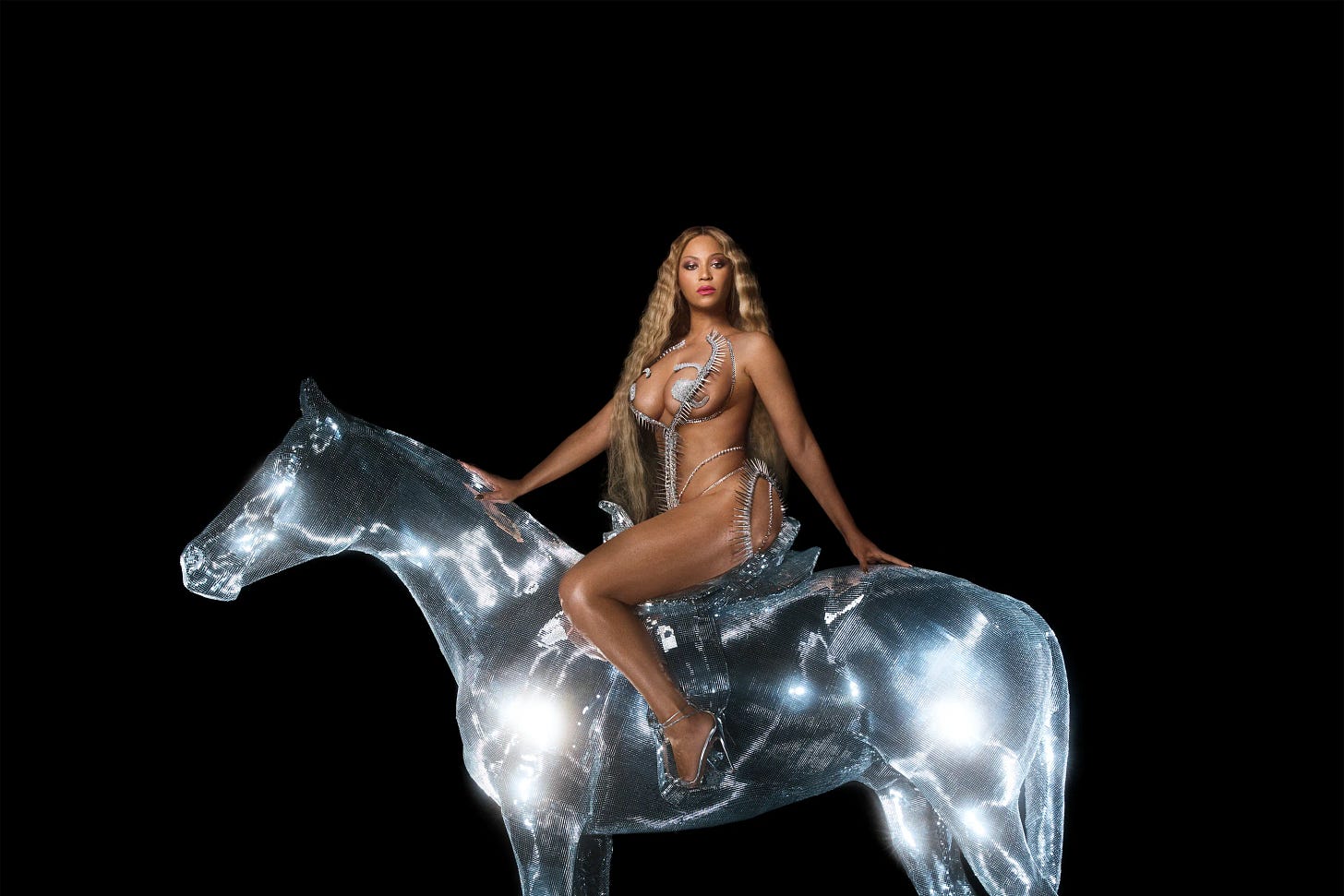

Halo #1 with a bullet bud.